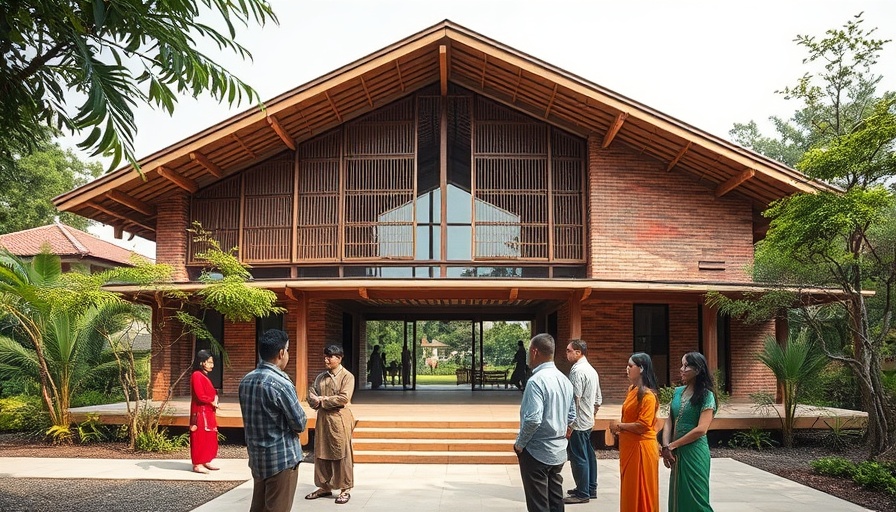
The Role of Architects as Community Mediators
In recent times, architects have increasingly taken on the role of mediators, navigating the complexities between diverse stakeholders in the Global South. This shift stems from the urgent need to address inequalities, environmental issues, and territorial conflicts through collaborative design. Architects, such as those at SEALAB in India, Yasmeen Lari in Pakistan, and Comunal Taller de Arquitectura in Mexico, demonstrate architecture's capability to mediate and transform societal structures.
SEALAB: Bridging Cultures and Needs
SEALAB stands out for its innovative participatory design processes. For instance, the School for Blind and Visually Impaired Children was built through workshops that engaged both students and teachers. Here, architects utilized tangible tools, such as 3D models, to foster understanding, illustrating how design can be as much about sensory experience as aesthetic appeal. By prioritizing community input, SEALAB fosters a cultural bridge, transforming the educational environment to cater to actual needs and aspirations.
Yasmeen Lari: Transforming Lives through Sustainable Design
In Pakistan, architect Yasmeen Lari has pioneered "zero carbon, zero waste" architecture in response to environmental crises. Following the devastating floods of 2022, Lari advocated vernacular building methods that utilized local resources, thus empowering communities rather than imposing externally sourced solutions. Through transforming female residents into "barefoot entrepreneurs,” Lari's projects highlight the empowerment of marginalized voices and sustainable practices that enhance local economies.
Comunal Taller de Arquitectura: Honoring Cultural Identity
Meanwhile, Comunal Taller de Arquitectura in Mexico has redefined housing solutions for the indigenous communities of Puebla. Their approach respects local traditions while adhering to safety regulations. By organizing community mapping workshops and engaging local labor, they provide culturally significant and environmentally suitable housing. This emphasizes architecture's role not merely as shelter but as a means of collective identity and social empowerment.
Shared Strategies and Future Possibilities
These cases reveal a shared understanding of architecture as a political act. By listening to and catering to local needs, architects can create sustainable solutions that resonate deeply with communities. The participatory model adopted by these firms shows promise; their efforts lead to empowered communities capable of navigating their futures. The architecture community must acknowledge and support these transformative practices to ensure that design continues to foster inclusivity, sustainability, and innovation.
 Add Row
Add Row  Add
Add 




Write A Comment